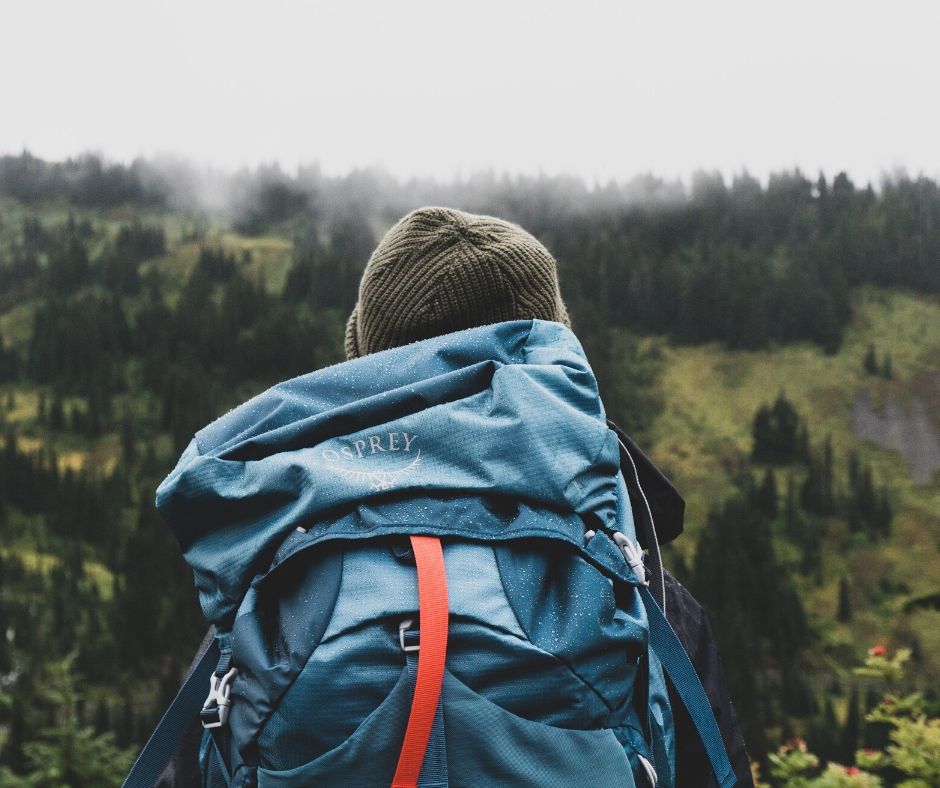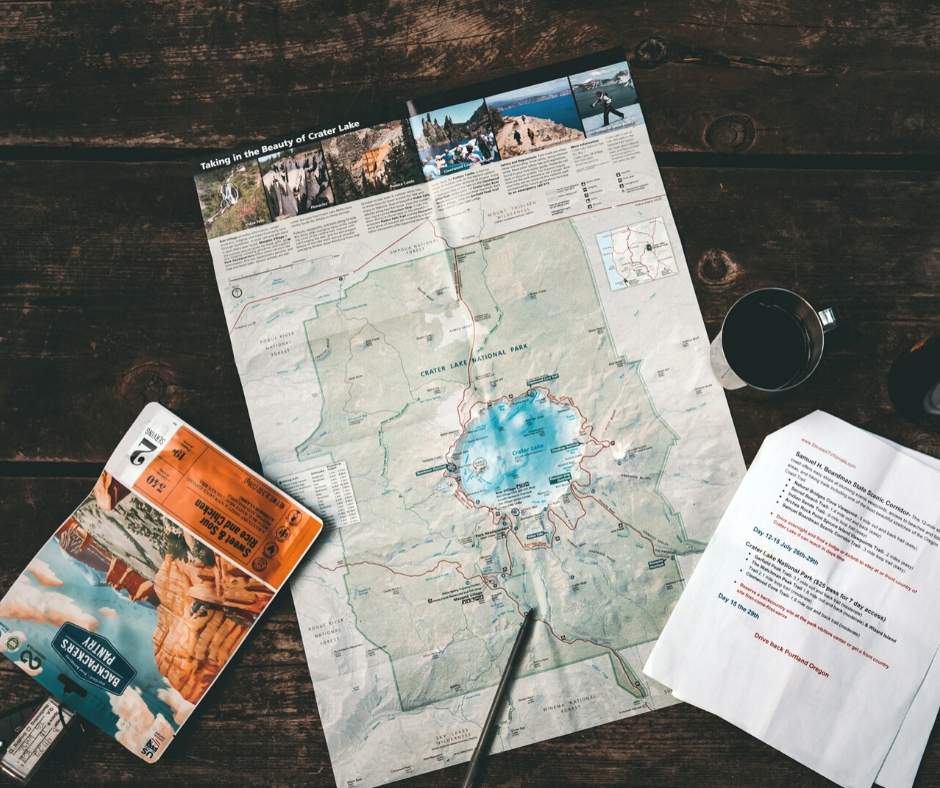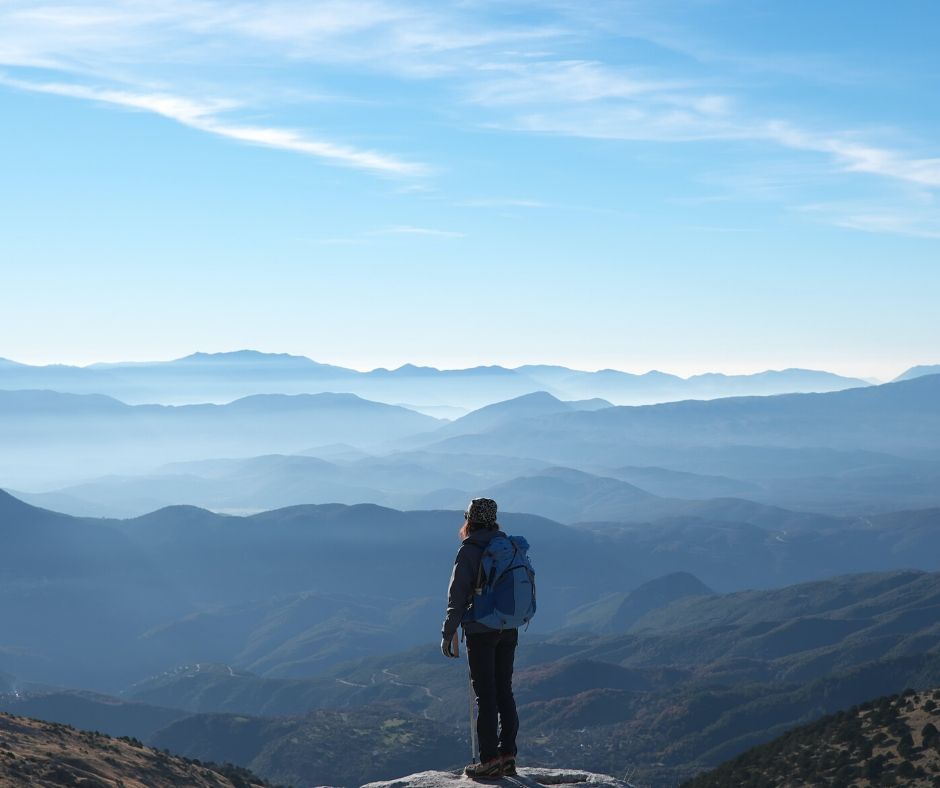Your 1st Backpacking Trip

In 2007 I prepared for one of my first overnight hikes: a 4-day backpacking trip in Olympic National Park. I was joining a group of climbers, most of whom had been there and done that but I decided to plan for this trip on my own. I heaved my backpack onto my body with pride. It was heavy, loaded with everything I’d possibly need and more. All the stuff I couldn’t cram into my pack I creatively attached to the outside. Bits and pieces of gear dangled from every hook, strap and carabiner on my pack. I was ready.
Or so I thought. I brought too much of some things and not enough of others. I failed to adjust my pack adequately to my body. I missed the mark on my footwear and as a result of all my blunders I hobbled around for a week after returning from my trip. Not to be deterred by one miserable experience, I strove to do better next time. Since that outing I’ve gone on many, more enjoyable overnight hikes and today I’ll share some strategies to help you plan a successful first backpacking trip.
Where and when to go
If you want to enjoy backpacking, it’s important to have a fun first trip. Choosing the right location at the right time is a great start. Do you have any friends who like to backpack? Ask them for suggested beginner itineraries. Choose a low-mileage option to begin. And remember that out-and-back hikes are easier to bail out on than loop hikes. Knowing your average daily mileage with a light pack will help you choose an appropriate distance for an overnight trip. For example, if your longest day hike tops out around ten miles, start with something shorter, like a 5-8 mile/day target for your first backpacking trip.
Consider the timing of your backpacking trip. What will the weather be like? How about bugs? Will there be running water? Will there be snow on the ground? An ideal first backpacking outing will have mild weather, plenty of fresh water sources and easy access. If you have to post-hole through knee-deep snow, wade creeks or deal with sub-freezing weather at night, you might not have a great time (unless you’re into that kind of thing, and in that case go for it).

What to bring (and what not to bring)
When packing for one or more nights on the trail, it’s important to think about a few things: what you need, what you might need and how heavy it is. For example, you know you need to bring food, but how much should you bring and what kind? For a multi-day trip you may opt for fruit leather (light, packable) versus a whole watermelon (heavy, cumbersome, produces lots of waste). As a beginner, you probably don’t have all the things you’ll need to have a successful first trip. And if you go into a gear shop to get outfitted for your trip, you might balk at the price tag. Start with your friends: see how much stuff you can borrow for your trip. This serves a few purposes. First, you can get a sense of what you like and don’t like about particular pieces of gear. Second, you save money by not buying stuff that doesn’t meet your needs. Third, you get to pick your friend’s brain about the ins and outs of backpacking.
Having a well-fitted pack and the right shoes will ensure that you are comfortable on your trip. Start with these two things. Then, recall the ten essentials. Make sure you pack items from each category to satisfy the needs of your trip.
Here’s the list:
- Navigation
- Headlamp
- Sun protection
- First aid
- Knife
- Fire
- Shelter
- Extra food
- Extra water
- Extra clothes
Food and water are heavy and take up precious space in your backpack. When choosing meals for a multi-day trip, aim for foods that are light and calorie dense as well as tasty. And remember if you need to cook your food on the trail you’ll also need to pack a stove, pot and fuel. Know how much water you will plan to see along the way and pack a water filter instead of carrying all of your water for the duration of your trip.

Logistical planning
Overnight trips can require a bit more advanced planning than day trips. Ask yourself these questions:
- Do I need a permit and do I need to apply for one in advance?
- Where will I camp each night?
- Where can I leave my car overnight?
- Do I need to organize a car shuttle?
- Who will I leave my itinerary with?
- What are my bail out/backup options?
Many forests and parks require permits for backpacking trips. Popular areas sometimes have application processes and lottery systems for permits when there are more interested parties than there are available backcountry sites. Check the website for the place you want to visit or call the ranger’s office in order to help plan your trip.
Leave No Trace
Finally, learn and practice the seven principles of Leave No Trace:
- Plan ahead and prepare
- Travel and camp on durable surfaces
- Dispose of waste properly
- Leave what you find
- Minimize campfire impacts
- Respect wildlife
- Be considerate of other visitors
The more you plan ahead and prepare (#1), the easier it will be to follow the other principles. The trickiest challenge for new backpackers is waste disposal. Before you leave for your trip, find out if there are backcountry toilets near your planned campsites. If not, you’re responsible for bringing a trowel and burying your poo or packing it out in a wag bag. And remember: waste includes human waste, pet waste and food waste!
Bon voyage
Know this: you WILL make mistakes on your first backpacking trip, and that is how you’ll learn. Whatever you do, minimize your impact, have fun and take lots of video!
By: Jess Beauchemin
"Jess Beauchemin is a personal trainer living in Bend, Oregon who is passionate about spending time in the outdoors. She loves hiking, climbing, mountaineering, camping, backpacking and skiing. Her one superpower is the ability to find solitude just about anywhere."
Read more on her website: www.jessbfit.com